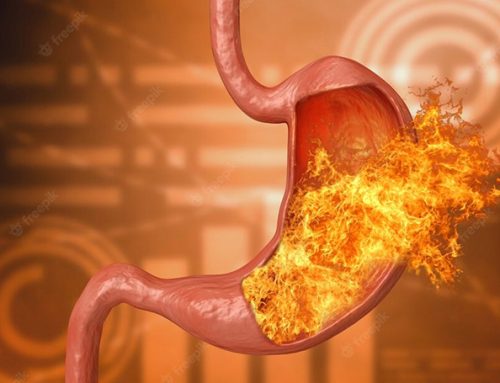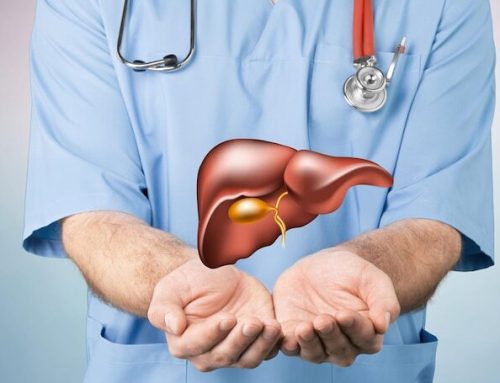Ayurveda is one of the oldest systems of medicine that originated thousands of years ago. Till now ayurvedic medicines are being used in India and all over the world. It is different from modern science which provides symptomatic relief only, whereas Ayurveda examines the root cause of the problem. The term Ayurveda is derived from the Sanskrit words Ayur and Veda which means ‘life’ and ‘science of knowledge’ respectively. Thus, it can be said that Ayurveda translates to ‘knowledge of life’. Ayurveda looks at an individual not as a body made up of acids, minerals and carbohydrates but as a mental and spiritual entity with a life force or prana that sustains life.
Five elements of life
While Ayurvedic treatment believes in the concept that man is a microcosm (miniature copy) of the world he lives in, the primeval matter that reveals itself to us in a perceivable form is through five primary elements. Thus the basic elements of the whole universe are made up of the same elements as our body. The five elements of life are known as the Pancha Mahabhutas and are as follows:
- Akasha (Ether or Space)
- Jala/Apas (Water)
- Tejas (Fire)
- Vayu (Air/Wind)
- Prithvi (Earth)
Characteristics of 5 Elements
Akasha (Ether/ Space)
ADS FOR TESTADS FOR TESTADS FOR TESTADS FOR TESTADS FOR TESTADS FOR TEST
Space means ‘emptiness’; similarly our body has many spaces for free movement such as our windpipe through which the ingested food goes to the stomach. Therefore, the spaces in our body represent the Akasha element which is also known as channels of transport or srotas. It is an element in which other elements fill, especially the mouth and ears which are associated with this element. It is important to mention that all empty spaces in our body are in some way connected to this element.
| Elements | Qualities | Functions |
| Akasha(Space) | Light, soft, measureless, subtle | Love, connection, freedom |
| Jala (Water) | Damp, viscous, dull, oily, cool, soft, liquid | Cleansing, flow, life, downward movement |
| Tejas (Fire) | Dry, sharp, subtle, hot, light | Radiance, intelligence, perception |
| Vayu (Air) | Rough, cold, light, subtle, dry, vigorous | Thoughts, change, movements |
| Prithvi (Earth) | Blatant, heavy, hard, steady, dull, dense | Gravitation, stability, defiance |
Manifestation of the 5 elements in the human body
In various proportion, each of these five elements is present in our bodies that are grouped under three categories known as the doshas. These elements are combined within us in each DNA, known as prakruti or body-mind constitution. All the three doshas are as follows:
- Space and Air à Vata dosha
- Water and Fire à Pitta dosha
- Earth and Water à Kapha dosha
You may have one, two, or maybe three doshas present in your body, however, it is rare. All in all, an individual may have a Kapha predominant constitution, a Pitta predominant constitution, or a Vata predominant constitution. These tridoshas control and manage all the psychological, biological as well as physio-pathological functions of our body, mind and consciousness. In Ayurveda, the imbalance or deviation in the body is described as vikruti, opposite to prakruti.
Let us understand this in detail, when an imbalance or vikruti occurs, it means one or more doshas in your body are aggravated, that in turn disturbs the digestive system (Agni), thus resulting in Ama or toxic unprocessed food. Consequently, these toxins block the srotas or bodily channels and deposit themselves in the tissues (Dhatus) from where the disease develops. Below is the effect of each element and its effect on the body:
Akasha or Space
Space can also be described as the gap between two things. It is non-resistant and acts as a medium of sound to travel. It is also responsible for our wisdom and intuition, along with governing our auditory senses. The srotas or channels of transport are present in every system of our body such as the circulatory system, digestive system, lymphatic system, respiratory system, etc. When this element is out of balance, it can manifest in problems related to hearing, speech and thyroid issues.

Effect of High Space Element
Many conditions occur due to an increase in space, such as an increase in spleen (splenomegaly), twisted veins (varicose), increase in the size of the heart (cardiomegaly), blood-filled balloon in vessels (aneurysm).
Effect of Low Space Element
When space decreases in the body such as between the joints, it resists and causes joint pain. It is even more dangerous if the space is reduced between thoughts, resulting in insomnia, irritating behaviour, anxiety disorder and violence.
Jala orWater
The quality of water is the coldness that has cohesive properties and helps lubricate.
Effect of High Water Element
When there is excessive accumulation of water element in our body, our digestion slows down, and we may become dull and insensitive to the situations around us. This makes us bogged-down, heavy, highly emotional or depressed. The wet quality of water element douses our digestive fire, resulting in weight-gain, lack of appetite, sluggishness and apathy.
Effect of Low Water Element
Deficiency of water element can lead to dry skin, dry eyes, burning sensation; one might become constipated and lethargic. The depletion of the sticky and smooth qualities of water element also results to a loss of the ability to connect with others, or with nourishment in general.
Tejas or Fire
The quality of fire is heat, which helps in purification, melting, and makes things mature. As fire has the power to change anything such as from solid to liquid and from liquid to gas, a balanced fire can melt osteophytes of the spine and joints, fibroids of the uterus and cysts of an ovary.
Effect of High Fire Element
When the fire is in excess, you may suffer from issues such as sweating, overheating, urticaria, skin rash, acidity, anger, aggression, frequent urination as well as dark urine with a burning sensation. Disturbance of fire elements also leads to disorders of visual perceptions.
Effect of Low Fire Element
When the fire reduces, it causes high cholesterol, decreased appetite and lack of creativity. Moreover, an imbalance in this element can result in various problems such as digestive issues, feeling cold, inflammation, fever, metabolic disorders, mental illnesses and skin problems.
Vayu or Air
The air element is transparent and formless as well as light, dry and cold. If it gets out of balance in our body, it can lead to nervous system-related disorders, pains in muscles, blood pressure and respiratory issues.
Effect of High Air Element
An excess of air in the body causes hyperactivity, twitching of muscles, unsteady mind and Parkison’s disease.
Effect of Low Air Element
If the air element is deficient in the body, it can lead to fatigue, lack of creative ideas, decreased bowel movement and low blood pressure. Even life goes at a very slow pace. The health of your joints, heart and digestive system becomes affected by the imbalance of the air element.
Prithvi or Earth
The nature of earth elements is stable, dry, thick, hard, heavy and slow. Earth has the power to stop or hold. The earth element is defined as anything solid. The element of earth is the summation of everything; therefore all foods have a connection with it. The earth element also creates a sense of stability, grounding, supportiveness and calmness.
Effect of High Earth Element
When the earth element is high, it can lead to nodes or tumors, hard stool, weight gain, etc. Moreover, when this element gets out of balance, it can lead to various issues such as weakness, lack of muscle, tendency to feel cold, insecurity, changes in bone density, or increased cholesterol.
Effect of Low Earth Element
When there is a decrease in earth elements in the body, there will be hair fall, weaker bones and teeth, weight loss and blood clotting issues.
It is important to remember that all these five elements are present in everything present in the environment and within us, such as emotions, foods and all other things that surround us. Ayurveda uses these properties for healing purposes; some of whichare listed below:
- Chilli, cayenne pepper, etc. are hot and dry (fire)
- Bread is dry and light (air)
- Cucumbers, aloe, plant juice are cold (shita)
- Anger is hot, anxiety is dry and light, sadness is cold
- Blood has qualities of fire and water (liquid and hot)
- Bones have similar qualities to air (dry and light)
Connection with each element
To get back to your roots and to connect with your inner self, establishing a connection with your surroundings, provides healing. Yoga and meditation are ways to process energy, while other procedures are spending time in nature or stargazing.
Connection with Space or Akasha
The space element resides onear, therefore, while being surrounded by nature, the slightest rings of nature awaken the space element. To establish a strong connection with Ether by listening to the chirping of birds, thunderstorm thud, whistling of winds, the flow of rivers, and much more, connects your body to the universe.
Connection with Water or Jala
Water processes the taste sensation that helps you indulge in varied flavours of different foods and fruits that make your mouth water while seeing them and at the same time give an astringent feel after biting. Water is the only entity that is most required to integrate our energy, so that we can constantly create a connection with it.
Connection with Fire or Tejas
Fire element controls our visual perceptions such as colour coordination, visual acuity and visual field. Gazing at the beautiful scenic beauty around us, spending hours watching the downpour of subtle rain, night sky, the lush green and the beautiful cloudy sky through our eyes bring life to the fire residing inside you through the Pitta.
Connection with Air or Vayu
Air processes the sensation of touch through Vata dosha. To activate the air entity through the skin, walking barefoot on the ground, feeling the soft touch of grass, flowers and leaves enhances our senses. The sensation that we get while walking on the ground helps us to understand the texture of things surrounding us and stimulates the air as well as earth entities.
Connection with the Earth or Prithvi
The smell sensation is the most important to activate the minutest entity in our body and connect to the earth entity. The smell of the first rain on the earth, a bowl of fresh fruits, freshly cut grass, the refreshing smell of your garden and all the other things that connect you to the earth entity via nose can help establish a connection with your inner self.
The Bottom Line
The five elements or the Pancha Mahabhutas manifest in the functioning of the five senses – ether, water, fire, air and earth –related to sound, taste, sight, touch and smell respectively. It can be said that Ayurveda regards the human body and its sensory experiences expressed through the manifestations of universal energy to be in the form of these five basic elements. Understanding these concepts helps us to bring our bodies into perfect harmony with the conscious mind.




